November 7, 2021
Stop! Collaborate and Listen: Water Quality Cohesion in Bangladesh is Missing
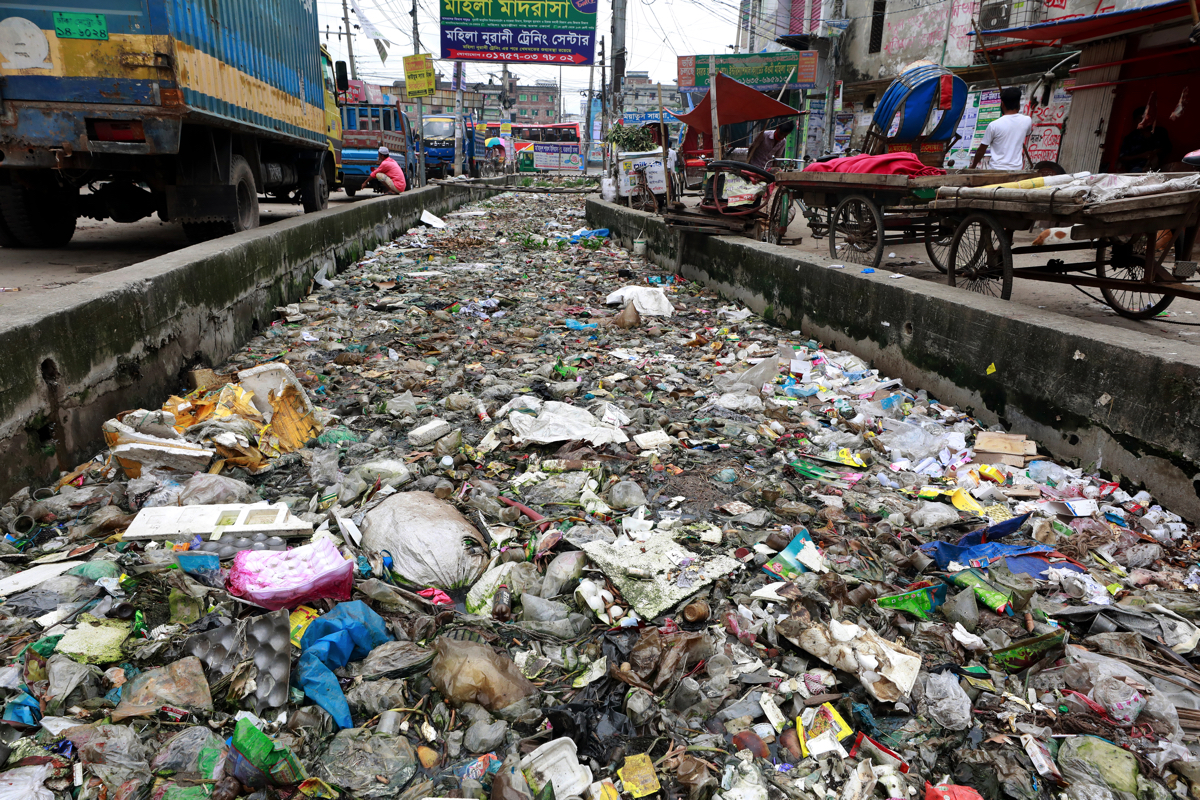
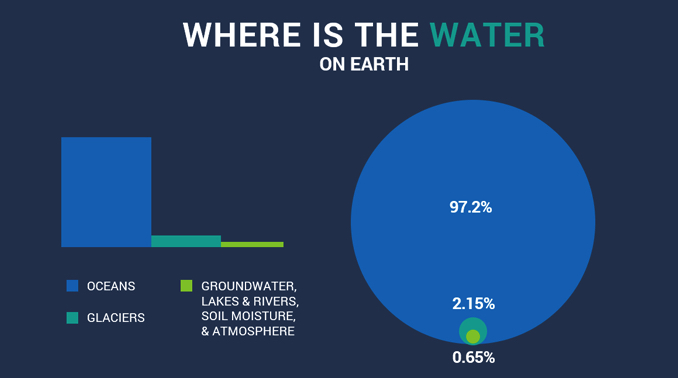
Nestled within a corner adjacent to northeastern India, spanning 57,300 square miles, lies one of the most densely populated countries in Southeast Asia, Bangladesh. The population of Bangladesh is spread out, with roughly 114 million people (76%) living in rural areas, and 36.4 million (24%) living in urban areas, with the largest concentration in the capitol, Dhaka.3 It is classified as a “riverine” country, with a vast amount of rivers and streams that flow from the higher elevations in the northern part of the country down through the rural and urban areas to the south. Four major river systems allow 230 rivers to interconnect throughout the land (Figure 2) which gives 97% of the Bangladesh population access to water. With 20 million residents, the mega-city of Dhaka relies on major rivers such as the Buriganga to sustain their existence. Unfortunately, these water systems are in peril from human-generated factors such as agriculture, industry, mining, power generation, unsanitary waste disposal practices, and other human factors. These factors affect the public health with high amounts of metal contaminants like arsenic, and bacteria such as E. Coli causing increased impacts to human health, and even death.4
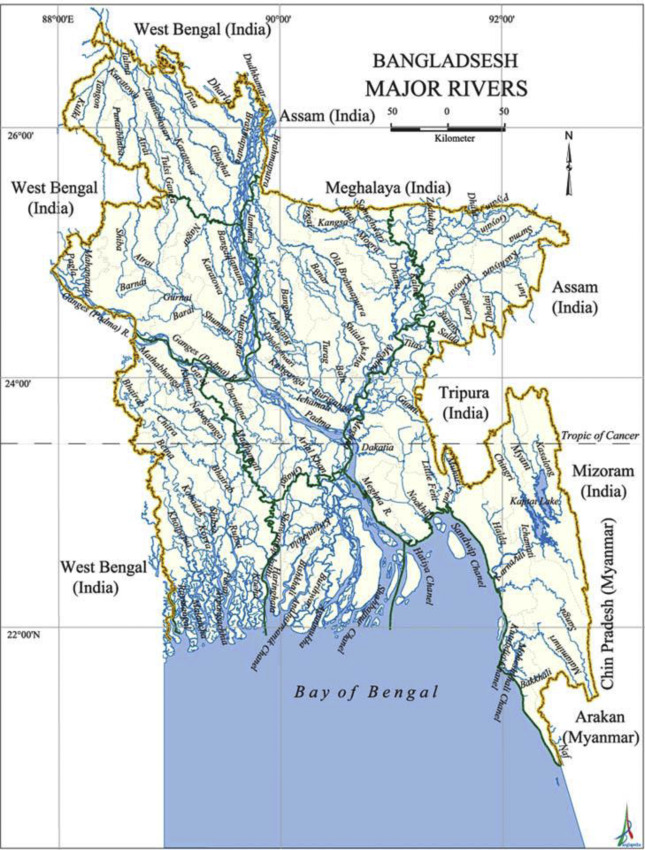
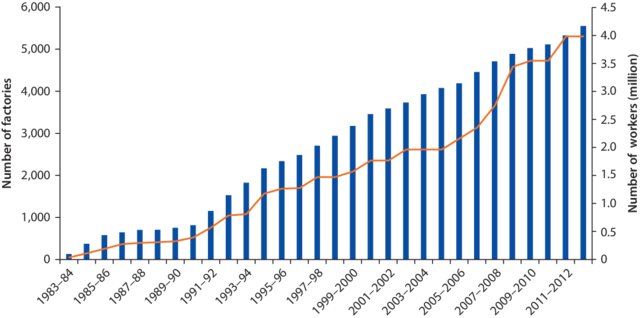
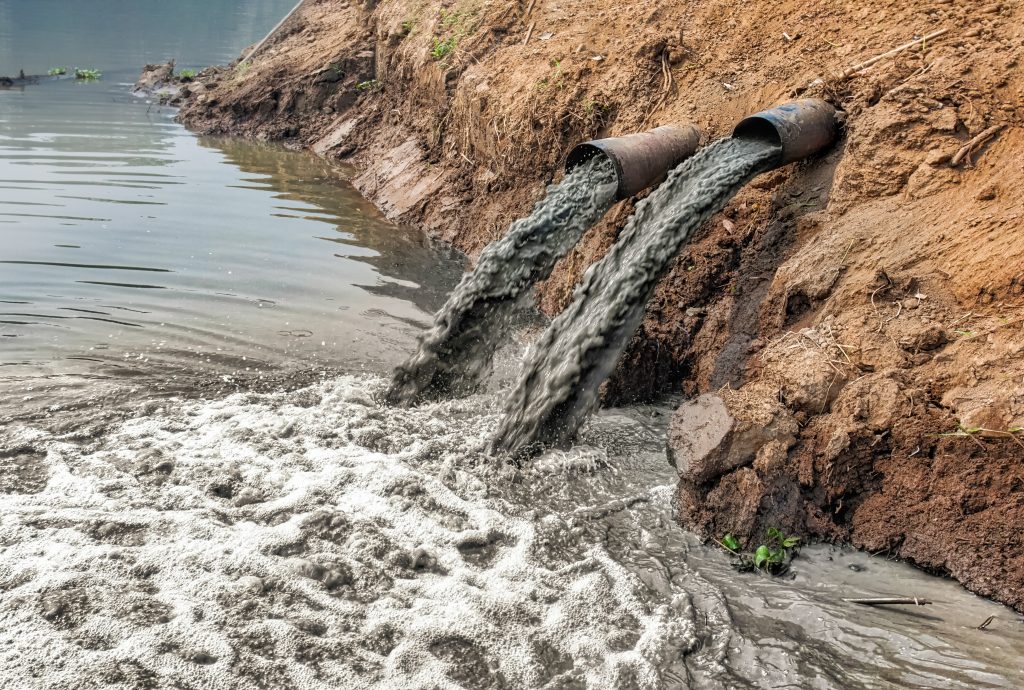
In relation to the RMG industries that contribute most of the pollution into the water systems, where does this lack of monitoring come from? Many of the lower tier organizations such as the non-government and civil societies highlight the opaqueness of accountability the government holds the private industrial sectors resulting in pressure put on organizations like the Department of Environment (DoE). The DoE is dedicated to monitoring, evaluating, and enforcement. Although the agency plays a pivotal role in managing the compliance with respect to ETPs, it is often pressured to report that high amount of effluents are being captured by the ETPs, instead of the ETPs not performing optimally and requiring the industry to shut down for repairs. The potential for a conflict of interest between the industrial sectors and government agencies further denotes the lack of cohesion amongst the water management organizations and results in inefficient implementations of strategies including highlighting areas that need to be reevaluated.15
However grim it might seem for the water quality in Bangladesh, many of the management agencies look forward to continuing progress that began in 2009 with the re-election of Prime Minister Sheikh Hasina (Figure 5). Standing on a platform devoted to restoring Bangladesh’s water quality while retaining its economic growth, she noted that “Conservation and protection of the environment is a time-honoured ‘responsibility’, not just a necessity.”16 In 2017 she gave a speech at the Dhaka Water Summit that highlighted some of the accomplishments she has overseen during her term in office. The rate of unsanitary human waste disposal in 2003 was 42%, but by 2017 the rate of unsanitary waste disposal was below 1%. She has taken an approach to restore surface water and reduce the amount of groundwater being used, resulting in 7,000 ponds being desalinated by sand filtering, with 4,700 reservoirs constructed to catch and preserve rain water. Plans to build reservoirs in industrial and housing areas are underway, with the installation of rainwater harvesting systems filtration systems for wastes and polluted water.17 Another breakthrough is the backing of the Bangladesh High Court that has ordered 231 out-of-compliance factories to shut down and repair systems to meet DoE clean water requirements18 The fact that the Bangladesh High Court has ordered factories to shut down until operations can meet DoE water quality regulations shows that collaboration is increasing among the agencies that hold power to promote change.
As progress continues and water quality increases, clean drinking water can be provided to the population of Bangladesh. This steady record of improvement showcases the importance of interagency collaboration, and how all individuals will need to adapt in order to maintain access to clean water. Although there is a long journey ahead to clean all the water in Bangladesh, the progress made today shows that collaboration is no longer missing, it is beginning.
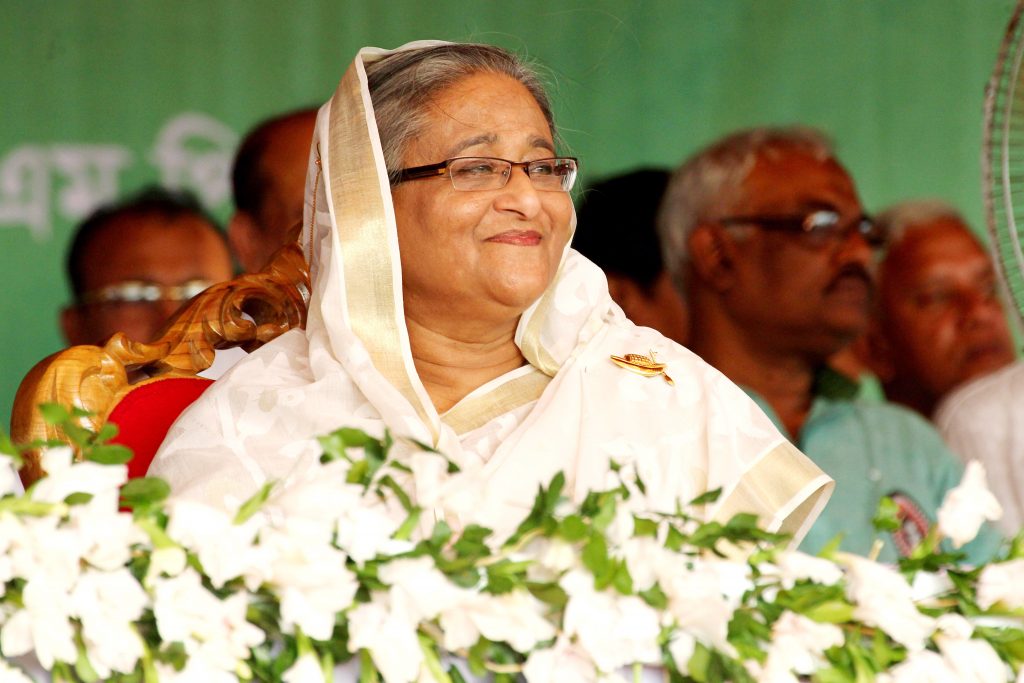
- “How Much Water Is on Earth? – Earth How.” n.d. Accessed November 4, 2021. https://earthhow.com/how-much-water-is-on-earth/. ↵
- “Water Facts – Worldwide Water Supply | ARWEC| CCAO | Area Offices | California-Great Basin | Bureau of Reclamation.” n.d. Accessed October 29, 2021. https://www.usbr.gov/mp/arwec/water-facts-ww-water-sup.html. ↵
- Hossain, Md Amir. 2017. “Bureaucratic System in Bangladesh.” Review of Public Administration and Management 05 (02). https://doi.org/10.4172/2315-7844.1000214. ↵
- Hasan, Md. Khalid, Abrar Shahriar, and Kudrat Ullah Jim. 2019. “Water Pollution in Bangladesh and Its Impact on Public Health.” Heliyon 5 (8): e02145. https://doi.org/10.1016/j.heliyon.2019.e02145. ↵
- “River – Banglapedia.” n.d. Accessed November 4, 2021. https://en.banglapedia.org/index.php/River. ↵
- “Bangladesh Case Study: Economic Development.” n.d. Economic Development, 53. ↵
- “Safety First: Bangladesh Garment Industry Rebounds.” n.d. Accessed October 29, 2021. https://www.ifc.org/wps/wcm/connect/NEWS_EXT_CONTENT/IFC_External_Corporate_Site/News+and+Events/News/Insights/Bangladesh-garment-industry. ↵
- Islam, Md. Saiful. 2021. “Ready-Made Garments Exports Earning and Its Contribution to Economic Growth in Bangladesh.” GeoJournal 86 (3): 1301–9. https://doi.org/10.1007/s10708-019-10131-0. ↵
- Kathuria, Sanjay, and Mariem Mezghenni Malouche. 2016. Toward New Sources of Competitiveness in Bangladesh: Key Insights of the Diagnostic Trade Integration Study. Washington, DC: World Bank. https://doi.org/10.1596/978-1-4648-0647-6. ↵
- Hossain, Laila, and Mohidus Samad Khan. 2020. “Water Footprint Management for Sustainable Growth in the Bangladesh Apparel Sector.” Water 12 (10): 2760. https://doi.org/10.3390/w12102760. ↵
- Restiani, Phillia. n.d. “WATER GOVERNANCE MAPPING REPORT: TEXTILE INDUSTRY WATER USE IN BANGLADESH,” 49. ↵
- Islam, Md., M. Uddin, Shafi Tareq, Mashura Shammi, Abdul Kamal, Tomohiro Sugano, Masaaki Kurasaki, Takeshi Saito, Shunitz Tanaka, and Hideki Kuramitz. 2015. “Alteration of Water Pollution Level with the Seasonal Changes in Mean Daily Discharge in Three Main Rivers around Dhaka City, Bangladesh.” Environments 2 (4): 280–94. https://doi.org/10.3390/environments2030280. ↵
- “Water Pollution River Because Industrial Not Stock Photo (Edit Now) 753258850.” n.d. Accessed November 4, 2021. https://www.shutterstock.com/image-photo/water-pollution-river-because-industrial-not-753258850. ↵
- Lindamood, Danielle, Derek Armitage, Dilruba Fatima Sharmin, Roy Brouwer, Susan J. Elliott, Jennifer A. Liu, and Mizan R. Khan. 2021. “Assessing the Capacity for Adaptation and Collaboration in the Context of Freshwater Pollution Management in Dhaka, Bangladesh.” Environmental Science & Policy 120 (June): 102. https://doi.org/10.1016/j.envsci.2021.02.015. ↵
- Lindamood, Danielle, Derek Armitage, Dilruba Fatima Sharmin, Roy Brouwer, Susan J. Elliott, Jennifer A. Liu, and Mizan R. Khan. 2021. “Assessing the Capacity for Adaptation and Collaboration in the Context of Freshwater Pollution Management in Dhaka, Bangladesh.” Environmental Science & Policy 120 (June): 104–5. https://doi.org/10.1016/j.envsci.2021.02.015. ↵
- “HE Sheikh Hasina | Champions of the Earth.” n.d. Accessed October 30, 2021. https://www.unep.org/championsofearth/laureates/2015/he-sheikh-hasina. ↵
- Hasina, Sheihk. 2017. “Bismillahir Rahmanir Rahim.” https://pmo.portal.gov.bd/sites/default/files/files/pmo.portal.gov.bd/pm_speech/f02109f4_3886_452d_9a57_ab1cdc5dc43b/dhaka_water_conf_290717_eng.pdf. ↵
- “Bangladesh Court Orders 231 Factories Closed to Save River.” n.d. Accessed October 30, 2021. https://apnews.com/article/669408ee151214f18b0fa74533d9674c. ↵
- “Portrait Prime Minister Sheikh Hasina Rally Stock Photo (Edit Now) 1707339541.” n.d. Accessed November 4, 2021. https://www.shutterstock.com/image-photo/portrait-prime-minister-sheikh-hasina-rally-1707339541. ↵
Tags from the story
Recent Comments
Phylisha Liscano
A very informative and interesting article. I enjoyed the images provided because getting the chance to see whats going on in other countries always grab my attention. The fact that Bangladesh has done so much to better their country by working together is very impressive. Overall great article, I really enjoyed getting the chance to read this article.
18/11/2021
5:09 am
Hannah Young
I loved this very detailed and informative article about water quality. There are unfortunately a lot of corporations that care about the benefits through money rather than the people who live in the bad water carrying environments. I am hopeful that change to better the water system will help many many people now but especially in the future. Very thought provoking article over water.
19/11/2021
5:09 am
Courtney Pena
I enjoyed reading this article as well as viewing the images. It is unfortunate that some people are living in areas with bad water. At least there is progress being made to increase the water quality in Bangladesh.
20/11/2021
5:09 am
Jose Peralta
I enjoyed every piece of this article! I learned a lot about the world outside and the pollution problem that Bangladesh faces.
20/11/2021
5:09 am
Jaedean Leija
The article you gave us was very detailed and well written. You pointed out what the issue was, gave examples on how the problem started and then proceeded to give solutions. Water takes a big part in our environment without clean water we can get sick, the water life could die and overall the chances of our world or global warming could end sooner if we don’t take care of our environment.
21/11/2021
5:09 am
Martha Nava
A very well-written article about a very important topic! I like your pictures as they let us see the magnitude of this problem. I think you did a very good job in showcasing how Bangladesh has worked hard to help the environment and how others should follow/learn their strategies. It is very impressive to see Bangladesh’s growth. I also think you’re title is really good and captivating to the audience.
21/11/2021
5:09 am
Camryn Blackmon
This article was super informative on the water issue in Bangladesh, but I also think similar things are happening in other countries. It was great to read that conditions are improving. I didn’t realize that the textile industry takes up so much water, and I wonder if this issue is only getting worse globally with the increase in the consumption of fast fashion.
21/11/2021
5:09 am
Morgan Kuchta
This was an incredibly engaging and informative article. I really appreciated your detailed analysis of the various organizations to show how the structure affects management. The steady improvements being made give me a lot of faith and I look forward to seeing more progress!
22/11/2021
5:09 am
Christian Guerrero
This was an amazing article, I loved the introduction as the opening picture really captures your eye and the graphs/visuals really complimented the information of this article. This article was very engaging and very impactful to make improvements in the water quality and I look forward to a follow up on the progress.
22/11/2021
5:09 am

Trenton Boudreaux
It is almost humiliating how a smaller country that has only existed since 1971 has responded better to our modern climate crisis than the superpower that is the US. A well written article that shows a problem in Bangladesh, but also shows the progress being made. If only the same could be said for the United States, but with how much power industry holds over US politics, I worry that such change won’t be possible until it is too late.
18/11/2021
5:09 am